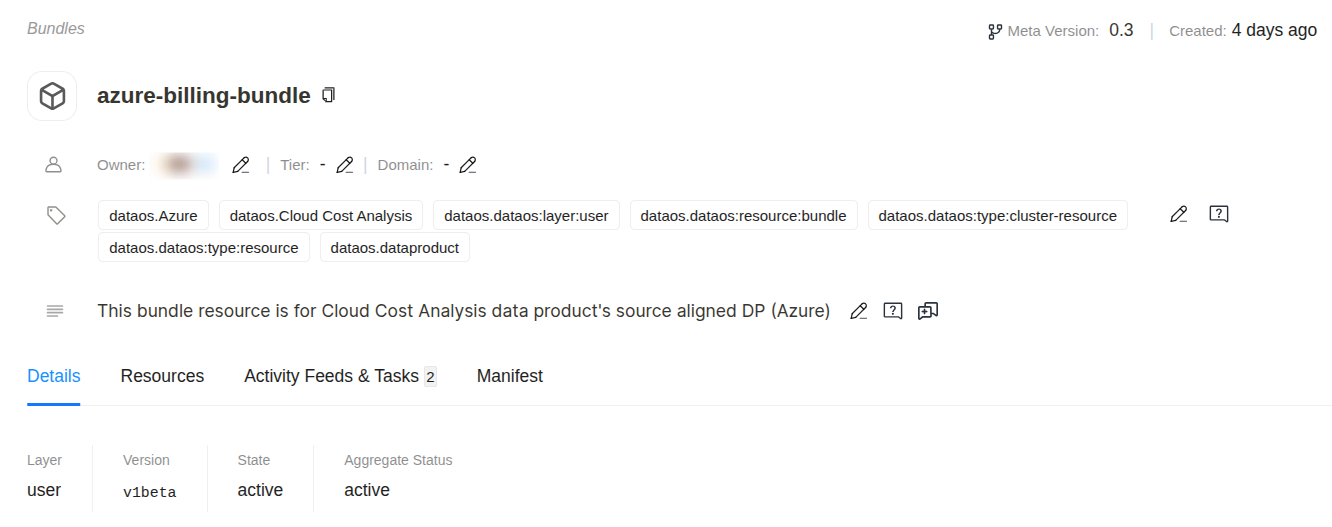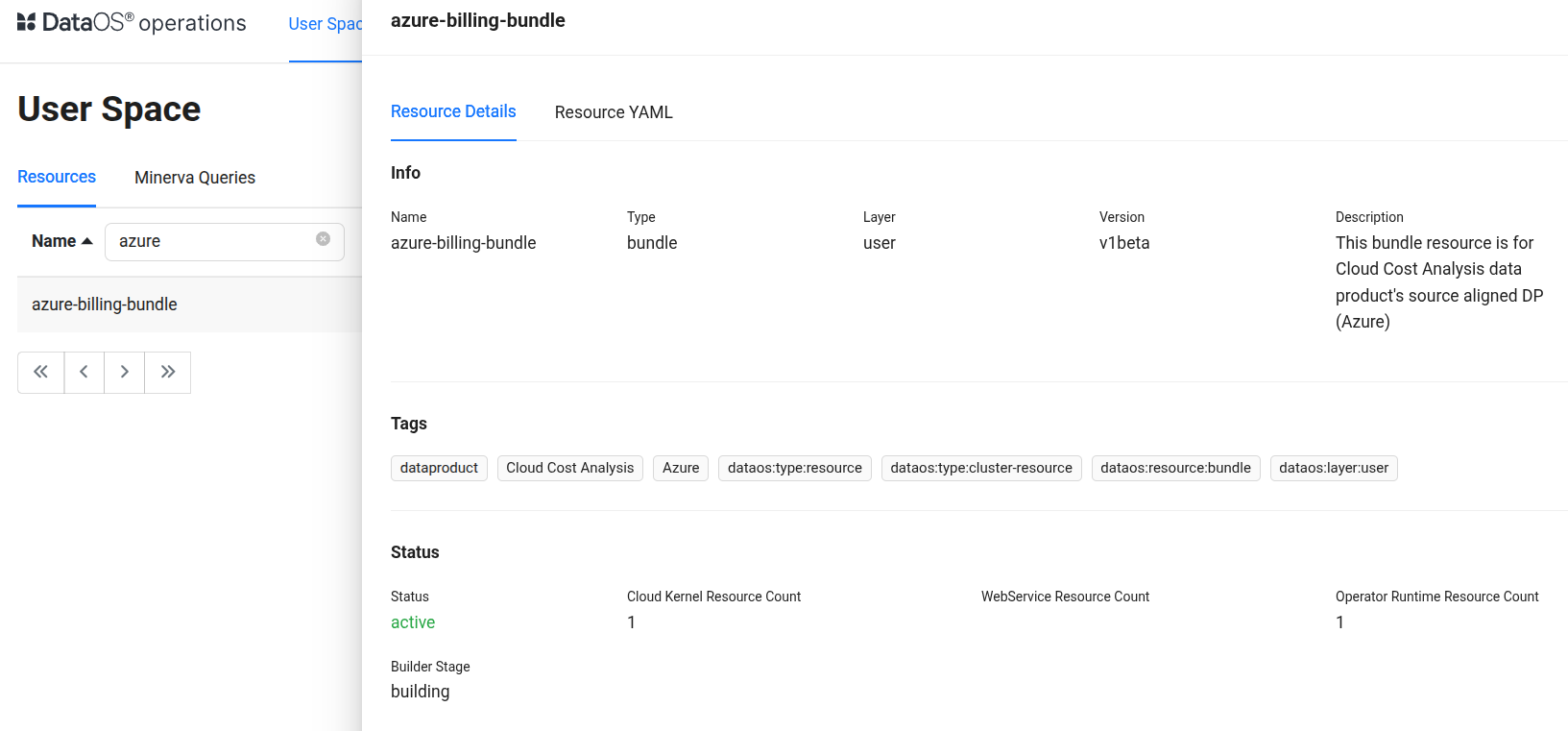Monitor the Status of the Bundle¶
In DataOS, the status of a Resource indicates its current life-cycle state, such as active, error, or deleted. Monitoring status allows teams to detect state transitions (e.g., from active to deleted or error) that may impact downstream dependencies, trigger configuration issues, or reflect access problems.
DataOS CLI¶
The status of a Bundle can be monitored using the DataOS CLI by executing the following command. This command will list all the Bundles created by the user.
Example Usage:
dataos-ctl get -t bundle
INFO[0000] 🔍 get...
INFO[0001] 🔍 get...complete
NAME | VERSION | TYPE | WORKSPACE | STATUS | RUNTIME | OWNER
----------------------|---------|-----------------|-----------|--------|---------|--------------
azure-billing-bundle | v1bets | bundle | | active | | iamgroot
In the example above, the STATUS column indicates the current state of the Bundle active in this case, which confirms that the Bundle is available and usable.
Metis UI¶
To monitor the status of Bundle on the Metis Catalog UI, follow the steps below:
-
Open the Metis Catalog.

Open the Metis Catalog -
Search for a Bundle by name.

Search the Bundle in Metis -
Click on the Bundle that needs to be monitored and check the Status, which is represented as
State.
Bundle details in Metis
The active state indicates that the Bundle is currently accessible and usable by other DataOS Resources. This is the expected state for any Bundle that is in use by other DataOS Resources.
Operations App¶
To monitor the status of Bundle on the Operations app, follow the steps below:
-
Open the Operations app.

Open the Operations app -
Under the User space → type → Bundle, search for the Bundle by name.

Operations > User Space > Bundle The
activestatus indicates that the Resource is valid and available for use within DataOS. This is the expected state for a healthy and usable Resource. -
On clicking the Bundle, its builder state can also be monitored.
When a user applies a Resource YAML (
dataos-ctl resource apply -f resource.yaml), the builder workflow begins. Poros orchestrates this by comparing the input state (what the user requested) with the current cluster state (what already exists), and attempts to reconcile the two.If a Resource enters an
errorstate during this stage, it means something failed while setting it up. A Resource in an error state at the Builder Stage is considered not fully created and should not be treated as active, even if it appears in the UI list.
Bundle details in Operations Monitoring the Builder Stage is recommended when the Resource status shows an
error.- If the status is
errorand the Builder Stage is stillbuilding, it indicates that the issue occurred after the building stage. - If the status is
errorand the Builder Stage also showserror, it means the issue happened during the building stage itself.
This helps in identifying whether the problem lies within the building phase or after the Resource was built.
- If the status is
Status alerts¶
To automatically track critical state transitions, users can configure a Monitor and Pager to send alerts when the status of a Bundle changes to values like error or deleted. This enables teams to respond immediately to resource failures, misconfigurations, or unexpected deletions that may impact dependent components. Click here to view the steps to set up alerts for status changes.